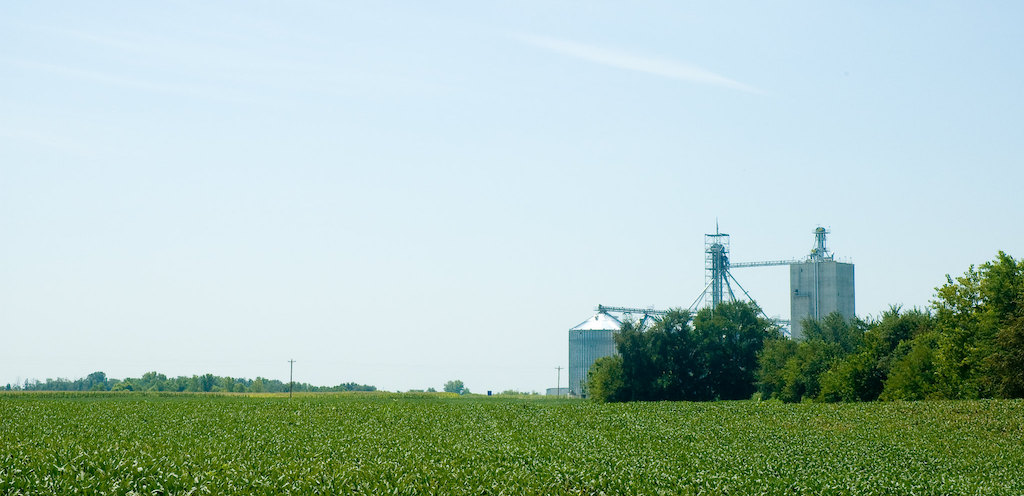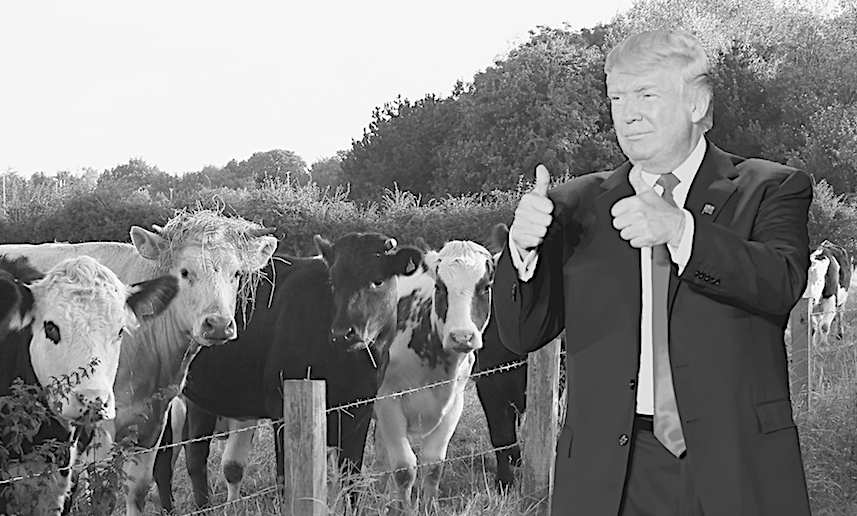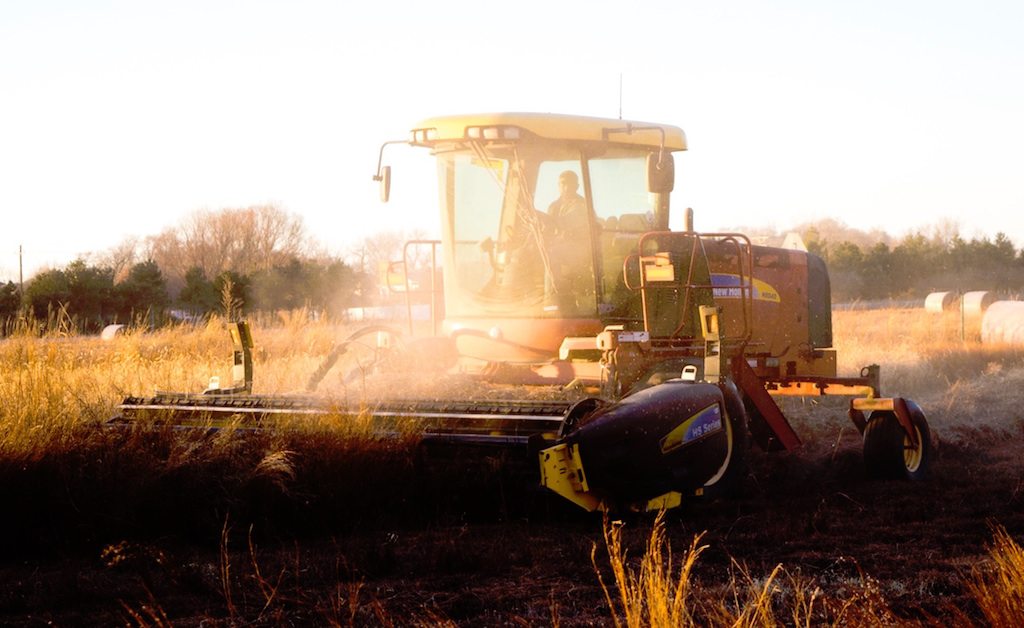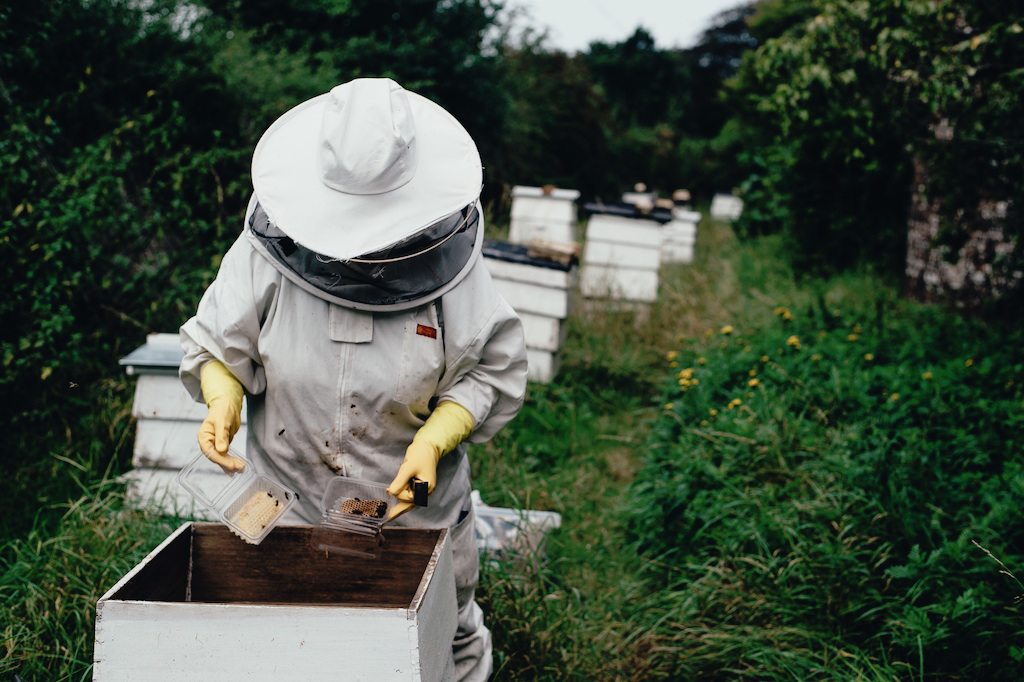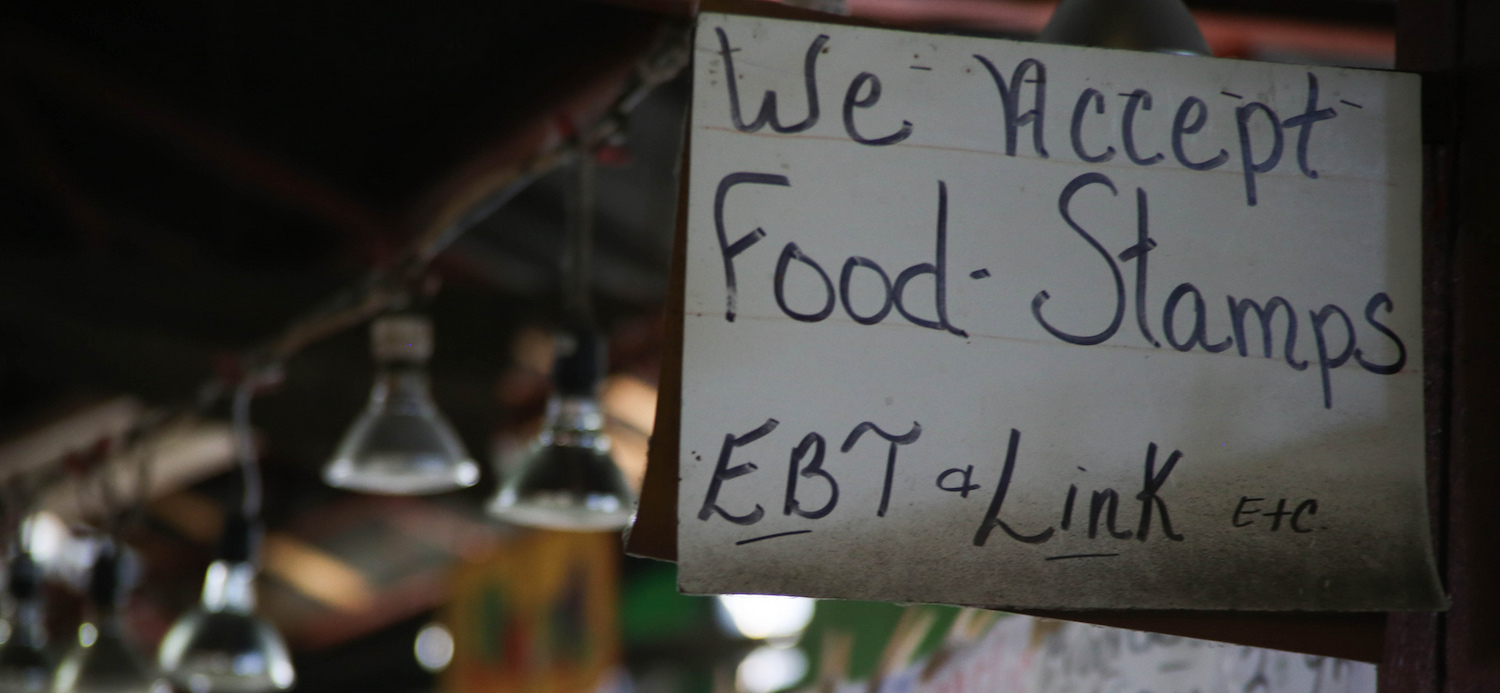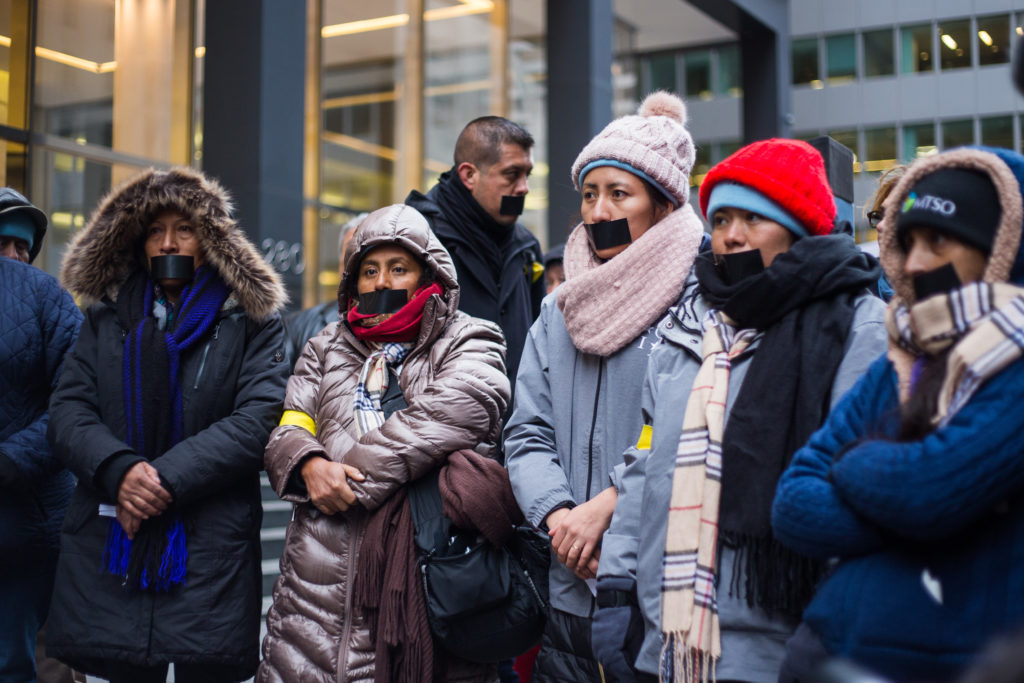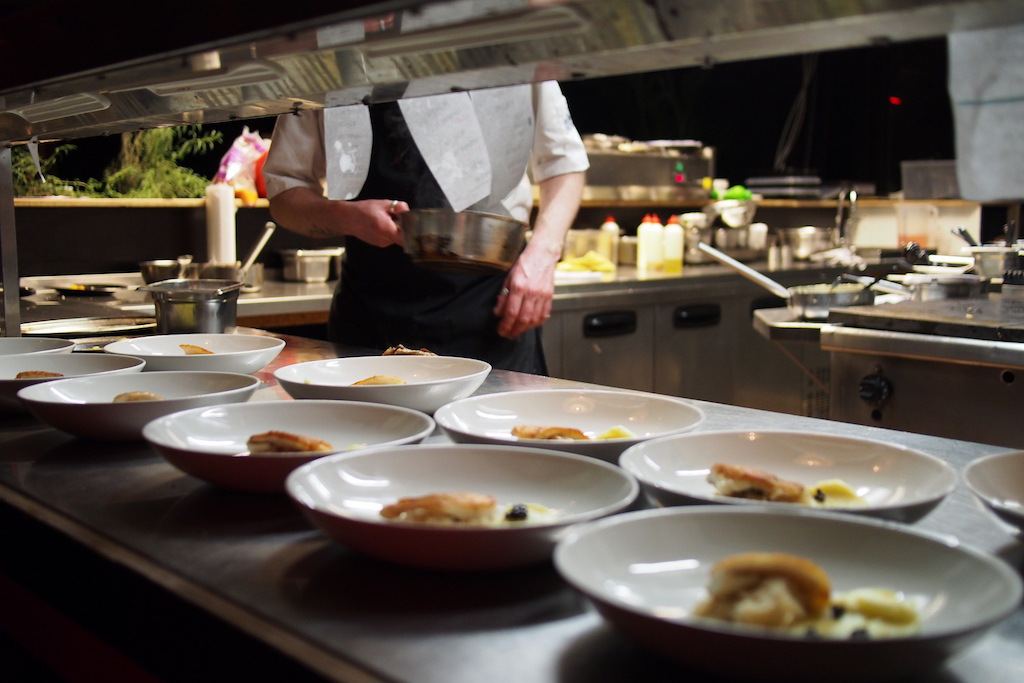UPDATE 6/6/2019: After this story published, we received more specific information from USDA in response to a request we submitted via the Freedom of Information Act. The payment data we received did not match the numbers we reported on here. But the numbers provided still don’t explain the origin of the payments we found in the Treasury database, which USDA has not yet clarified. We have reached out to the agency for further explanation.
However, we were able to find payments to individual farms that were actually higher than what we reported below. We now have more detailed information. You can read the new story here.
New data suggest that a few farms are cashing in on President Trump’s farm bailout in a way that’s not quite in the spirit of the rules. Though no single person was supposed to receive more than $125,000 from 2018’s $12-billion bailout program, The New Food Economy has found that at least one farm has received more than $2 million. Three more have received more than $1 million. And payments to an additional eight farms have exceeded $500,000.
The Trump administration announced the first farm bailout, totaling $12-billion, last summer, to soften the blow of the president’s ongoing trade war with China. Most of the money was earmarked for direct payments to farmers, and a little more than $1 billion was set aside for government food purchases. As of May 15, USDA had disbursed $8.52 billion worth of those direct payments, primarily to soy, corn, wheat, cotton, and sorghum growers, Reuters reports. Then, last week, President Trump announced that he was planning an additional $16 billion in tariff relief spending.
These payments were logged on a federal spending database in late March, and the names of the recipients are redacted. They are attributed to the Market Facilitation Program, which is the farm bailout program that provides direct payments to farmers. The New Food Economy confirmed the payments with the Department of the Treasury and asked USDA to independently confirm that they were indeed distributed as part of the Market Facilitation Program more than two weeks ago. The agency did not, but it did send along a comment. We’ve included an explanation at the bottom of this story about why we’ve decided to publish without explicit USDA confirmation, but the agency on Friday did provide the following statement:
“To our knowledge, USDA’s payments have all been made in accordance with our published regulations and existing procedures for operations with multiple individuals that maintain management roles or are considered actively engaged in farming.
“Once payments are made, the Department has procedures in place to audit recipients at random or if warranted.”
The New Food Economy has submitted Freedom of Information Act (FOIA) requests to USDA for the identities of these farms. The last time detailed information about direct payments through this program were released was in November of 2018, when the Environmental Working Group (EWG) found that the highest payout had been $439,120.
Back to the high bailout receipts: The cap of $125,000 per individual is not the only limitation on these direct payments. They’re also meant to go only to entities with a net gross income of less than $900,000. So how is it possible that an individual farm has collected 16 times the payment limit, amounting to more than double the maximum annual income for a single recipient?
It’s all about the business structure. Farms are often structured as general partnerships, in which multiple “members” share ownership and responsibility for the business. As long as each member is “actively engaged in farming”—more on that later—they are eligible for their own subsidy payments, which max out at $125,000 each for the Market Facilitation Program. What this means is that very large farms with multiple “members” are able to collect subsidies many times over.
There’s no inherent problem with this rule. If I own a farm with my dad and we each spend 60 hours a week tending our soy crop, it makes sense that we’d both be entitled to bailout payments. And there are some laws about who can and can’t join these partnerships and receive subsidies: For non-family farming operations, no more than three individuals can qualify.
However, for family farms, no such limit exists. And the 2018 farm bill actually broadened the definition of “family” even further. First-cousins, nieces, and nephews were added to a list of people eligible to receive subsidies that already included great-grandparents, grandparents, parents, children, grandchildren, great-grandchildren, siblings, and spouses.
Ferd Hoefner, senior strategic advisor at the National Sustainable Agriculture Coalition (NSAC), says allowing farms to collect massive subsidies through the family member loophole is problematic. “First of all, it clearly violates the intent of Congress in creating a safety net to try to keep family farms afloat during bad years, which was of course the original intent of the law,” he says. “There are legal issues one could get into, but more importantly, there are big public policy issues. It’s a way of subsidizing, encouraging, and promoting continual consolidation of farms, and loss of mid-scale—and, now, loss of smaller large-scale—farms, as the biggest ones consolidate more and more acres. The taxpayers are essentially being asked to subsidize farm consolidation.”
There are other ways that farms can legally receive more than the individual $125,000 maximum. They may receive multiple payments for growing multiple products that are eligible for bailout funds. A person who grows large quantities of both hogs and soy, for instance, could hypothetically collect the maximum for each. (More on eligibility details here.)
In this case, the $2-million bailout payment in question would either have had to go to a commodity farm with 16 family members all claiming to be actively involved in farm management, or to a multi-use farm with five different members who were all claiming the maximum $125,000 benefit for a commodity, dairy or pork, and fresh cherries or shelled almonds (considered part of the “specialty crop” category), or some combination of these scenarios. For context, a farm that collected the maximum payments for all three categories would have to grow 75,800 bushels of soybeans, 15,600 hogs, and 781,000 pounds of cherries. I wasn’t able to find any farms in this country that grow enough in all three categories to meet these requirements.
The payments we found are likely some combination of farmers claiming subsidies for multiple commodities and farms organized as multi-owner general partnerships. And there are plenty of farms structured as general partnerships with enough members to rack up a $2 million allotment. As of 2015, there were 150 farms in the country that claimed 11 or more members who were “actively engaged in farming,” and therefore eligible for multiple subsidies, according to a 2018 report from the Government Accountability Office (GAO). The independent agency found that farms with more members tended to collect higher subsidy payments, and the top-10 subsidy recipients in that year reported an average of 13.6 owner-members. Put another way, the 150 farms classified as general partnerships with 11 or more members collected nearly twice as many total subsidy dollars as the 486 farms with just one owner, according to the report. About a quarter of the general partnership members GAO studied did not actually do farm labor.
Hoefner says USDA’s permissive stance on high subsidies for multiple-owner farms has not been victimless. “We saw beginning farmers shoved out of the land market, farming-dependent rural communities get fewer and fewer businesses and general population, and so you have a depopulating of the middle part of the country and it’s all against the intent of Congress … the purpose of the [subsidy] program is to promote family-scale agriculture.”
Still, it may surprise no one that large farms seem to be collecting disproportionate sums of Trump’s bailout money. Indeed, according to a New York Times op-ed from December of 2018, the top 10 percent of companies collecting farm subsidies received 77 percent of the funds between 1996 and 2016. This is just business as usual. Except, this time, the spending was never approved by Congress. The farm bailout doesn’t have to be.
“Under more normal political circumstances, Congress would be defending its turf and saying, ‘look, if we’re going to spend $25, $30 billion, we want to be involved in drafting how it’s going to work and how that money’s going to be appropriated and allocated,’” Hoefner says. “If Congress was taking a look at it, they’d create a more thoughtful, more long-term approach to the issue, rather than this kind of ad-hoc decision.”
The bailout money, though perhaps distributed unevenly, may ultimately do little to blunt the economic impact of rising tariffs. As an Illinois corn and soy farmer told CBS this week, “every day that this ticks on, farmers are the ones that are taking it on the jaw.”
***
 Screenshot froM USASpending.gov
Screenshot froM USASpending.gov Above: Trade Mitigation Payment. Below: Pecan payment similar to the type FSA suggested we had found. The “award details” for the pecan growers show business name and “fixed contract.” The MFP payment has a redacted name and a different payment type
Why we’re publishing
More than two weeks ago, The New Food Economy reached out to the Farm Service Agency (FSA), which administers the Market Facilitation Program, to confirm the high-dollar payments—and inquire why some farms received bailout funds so far beyond the stipulated limit. A spokesperson for FSA inaccurately claimed that the money was used by the Agricultural Marketing Service (AMS) to purchase food via the Food Purchase and Distribution Program, another part of the broader Trade Mitigation Program—the umbrella term for the farm bailout.
But after AMS said it could find no record of purchases made in these amounts, The New Food Economy again reached out to FSA, which then said the payments were made via the agency’s Web-Based Supply Chain Management system (WBSCM). A representative for WBSCM directed The New Food Economy back to AMS. AMS then promised we’d hear from the agency’s main communication office by May 23, but despite multiple follow-ups, we received only a generic statement by press time.
Here’s why we believe the payments we found went directly to farmers or farming entities, and do not represent a government bulk food purchase as claimed by FSA: We found an entry in the database that does represent a bulk purchase (Georgia pecans), and it looks completely different from the payments we found. Having compared the two, we concluded that FSA pointed us in the wrong direction.
First of all, in the Market Facilitation Program entry, the names of the recipients are redacted due to personally identifiable information in the database. If the payments were used to buy food, recipient names would be disclosed on both the federal spending website and the AMS website.
In addition, the payments are coded in the system as grant payments made through the Market Facilitation Program, which is not an umbrella phrase for all farm bailout programs; it is used to denote only direct payments to farmers. Furthermore, the payment type is coded as “Direct payment with unrestricted use,” whereas an entry we found for a pecan purchase via the food purchasing program was coded as a “Definitive Contract.”
Here is our example of an entry in the federal spending database for a pecan purchase made with farm bailout funds, and here’s the agency’s purchase record that matches the entry and flags the purchase as a trade mitigation buy. Both are for contracts with South Georgia Pecan Company in the amount of $699,404. Virtually no fields on this entry look similar to the million-dollar payments we found, leading us to conclude that the payments logged in the federal database are likely to be exactly what they look like: payments made directly to farmers via the Market Facilitation Program. We asked USDA to confirm the payments and also to tell us if they may be data entry errors. The agency did neither.
